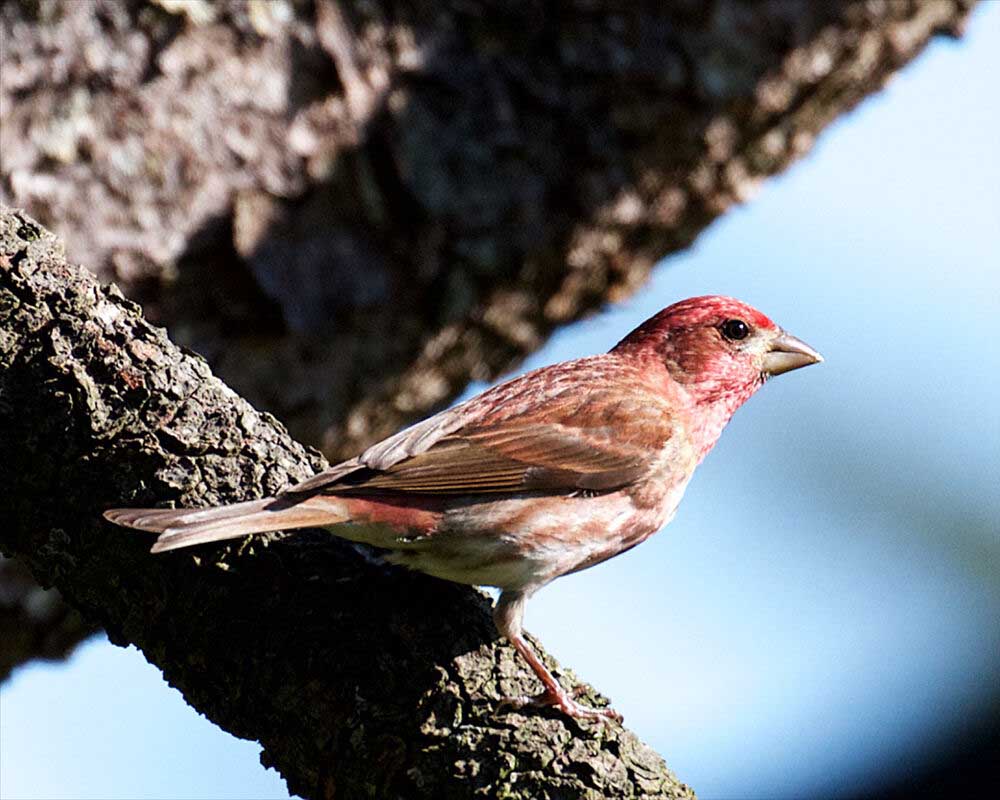Birding: Cheers to the red and gold
Published 12:14 pm Wednesday, March 15, 2023

- Male purple finches are not purple. They are more of a raspberry color or deep rose red.
Finches include crossbills, evening grosbeaks, goldfinches, house finches and purple finches. These finches are among our most common visitors at our feeders.
Trending
The house finch sports some red feathers with a few brown streaks, while the female mainly sports brown and brown streaks. House finches are common all year on the peninsula and across the United States. They were only found in the western U.S. until 1940 when pet stores in New York began to sell them. According to some writers, they were released by the store owners when it was determined that it was illegal to sell them. Thus, a small wild population was born. From New York they gradually spread throughout the East over the next 50 years until they reached the Great Plains in the 1990s where their western counterparts were found. (Kaufman and Kaufman, 2023).
The purple finch is widespread in the east and is a permanent resident on the peninsula and the Pacific Coast. The male is easily recognized by its raspberry color and lack of or pale pink stripes on its flanks. The female is brown with brown breast steaks and a distinctive head pattern.
Yellow is the color associated with goldfinches. There are several species, but American goldfinches are the best known. They should be seen on the peninsula in relatively large numbers very soon. Perhaps some of you have already had these beautiful birds visit your yards and feeders. It is around this time that I generally hear from readers that the goldfinches have returned. Even though they are permanent residents in our area, they aren’t always seen on a regular basis, as far as I know. In summer, the male is a brilliant yellow with black and white trim. Female American goldfinches are yellow too, but much less vibrant.
Trending
These species of red and gold finches are mainly vegetarians. While most songbirds feed their young protein for the most part, the red and golds tend to feed their young a vegetarian diet comprised of young leaves, buds, flowers, small fruits, and seeds. Some insects creep into their diets due to being on the plant material they are served.
American goldfinches tend to nest in trees and shrubs in open woodlands or fields. Their nest is cup shaped and tightly woven with rootlets and plant fibres. It is lined with plant down such as that produced by milkweed and thistles, or the nesting material sold by wild bird stores. Putting out such nesting material will attract American goldfinches to your yard. The use of such down usually means later nesting (in July) compared to other species. Nests are secured to branches with spider silk. The female is the nest builder.
House finches are more likely to build their nests on buildings, in flowerpots and hanging baskets. Their nest is also cup like and made of leaves, roots, thin twigs, string, wool and even feathers. According to the Cornell Lab of Ornithology house finch are known to raise up to five broods a year. The purple finch nest is also cup shaped. Nesting materials include rootlets, weeds, twigs, and strips of bark. Fine grasses, moss and animal hair are used for the lining. The nest is usually placed in the fork or a horizontal branch of tree. Like the American goldfinch, the female is the nest builder. In these three species, males may bring nesting material to the female and will also bring tasty morsels to her during incubation and to the young during their early days.
Watch for these spectacular red and the gold birds. They will bring delight and happiness. The colorful males are gorgeous during the breeding season. Watch carefully as nesting begins! You just might find a nest that belongs to the red or the gold! Happy birding.









